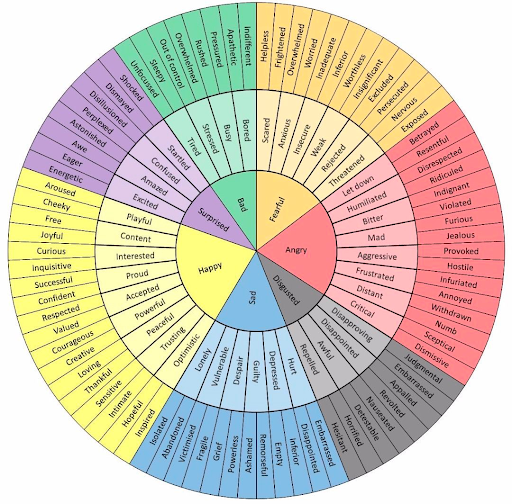The Positives of Negative Emotions (And How to Embrace Them)


Negative emotions like anger, fear, and sadness are part and parcel of the human experience. They’re infamous for causing stress hence we tend to avoid them like the plague.
However, research shows that embracing these emotions is vital to our well-being. Because life is complex and we’re bound to face hardships. The key is in embracing all our emotional experiences. So ultimately, we can adapt them towards personal improvement.
Why We Need Our Negative Emotions

Emotions are complex reactions to our thoughts and environment. They involve many biological and physiological processes within our bodies. That makes negative emotions completely natural. Most of the time, they’re even necessary.
1) They act as signals
Negative emotions exist to keep us safe and responsive to our experiences. The human race would long be extinct without them. They’re there to alert us of the dissonance between our systems and our surroundings so that we can take action. For instance:
- Fear signals that we need to move to a place of greater safety
- Jealousy signals an unhealthy comparison of ourselves with others
- Resentment indicates crossed boundaries or unspoken conflicts
2) They increase our effectiveness
Evolutionary psychologists Paul Andrews and J. Anderson Thomson assert that negative emotions have persisted for eons of evolution because they provide socio-cognitive benefits (1).
According to their influential article in the Journal of Psychological Review, we need moderate amounts of sadness and fear to assess social situations realistically. These emotions are also necessary for enhancing focus and spotting mistakes - all of which lead to success (2).
3) They create meaningful experiences
Evidence demonstrates that pain is often part of the most meaningful experiences in life (3).
Students in a 2018 Western Illinois University study reported that the tribulations associated with their education and relationships gave them tremendous meaning (4). Learning how to embrace these emotions provided them with the lessons needed to progress further in life.
4) They cultivate resilience
Exposure to negative emotions is essential for building the mental tools needed to cope with a crisis.
For example, “stress inoculation training” involves exposing people to triggering stimuli while guiding them to cope with their anger, fear, and anxiety. Research has shown that these methods are effective in cultivating emotional resilience (5).
💡Fun Fact: Research has clarified that our emotions are not directly responsible for health disorders and illnesses. Rather, it is the prolonged repression of emotions that manifests into diseases (6). On the flip side, the healthy expression of emotion has amazing benefits for physical and mental health.
How To Embrace Negative Emotions to Your Advantage

Amongst an array of uncomfortable emotions, we guess that you’re feeling worried about the future and feeling regretful about missed opportunities. And hey, they’re totally normal and valid.
Luckily, you can use these feelings to your advantage. To live more fully and be our most authentic selves, we to first face our pain, and not suppress it. Here’s how:
1) Welcome them
Allowing negative emotions to roam in may be a strange experience for most people. I mean, who wants to let anxiety, fear, and sadness through the door?
Know that emotions are fleeting by their very nature, so treat them as temporary guests. When we let in whatever arrives, allow it the space to simply be, and observe them non-judgmentally. They’ll usually roam freely and eventually leave.
2) Name them
Once you’ve mindfully observed and accepted the emotions that arise, give them a name.Labeling our distressing emotions is a way to validate our inner experience (7). It also has the added advantage of dialing down the intensity of those emotions. If you’re struggling to put your feelings into words, use the Wheel of Emotions provided below!

3) Feel them
We get it. Negative emotions hurt. They may even translate into pain and tension in the body.
Most of the time, to release them is to pinpoint exactly where the tension is being held. A body scan can help identify where in your body you feel the greatest intensity of the emotion. By drawing attention and breathing into those tense areas, you can restore a sense of calm and balance. Also, check out the Body Scan exercise on our ThoughtFullChat App 🧘🏻♀️
4) Extend compassion
Imagine you’re hanging out with a good friend who’s going through a tough time. How would you help them? How would you show that you care? What words would you find comforting or soothing?
Now, extend that same compassion back to yourself.
Brené Brown’s work on vulnerability shows that being compassionate with ourselves leads to wisdom and courage (8). When we accept ourselves and the emotions we feel, even the most painful moments become tremendously healing.
5) Leverage them
Take what you’ve learned from those emotional experiences to build your self-awareness. By understanding your emotions, you improve your judgment and better identify opportunities for growth.
For instance, it is normal to feel nervous prior to giving a speech. People who understand the symptoms of nervousness know that it’s their body’s natural response to an unfamiliar situation. The boost of adrenaline and enhanced awareness appears to prepare us for what lies ahead. With practice, you can leverage this response to your advantage. By reappraising anxiety as excitement, this response facilitates your performance more than it debilitates it (9).
Summary
It is impossible to avoid negative emotions because to live is to experience adversity and setbacks. Therefore, let’s make use of our emotions to plan our way forward. Learn to befriend them, solve problems with them, and conquer your dreams alongside them.
FWD and ThoughtFull are here to help!
Looking for a professional to support your personal mental wellness journey? Enjoy a 1-month free trial* on ThoughtFullChat (provided by FWD) which includes:
- Online self-serve tools (e.g., mood trackers, journaling, emotional health assessments and more)
- Evidence-based learning packs
- Unlimited text-based coaching with licensed mental health professionals for one month
Get your free 1-month trial on ThoughtFullChat here.
Footnotes
- The bright side of being blue: Depression as an adaptation for analyzing complex problems - PMC
- Sad Workers May Make Better Workers -- ScienceDaily
- Key Differences between a Happy Life and a Meaningful Life | Stanford Graduate School of Business
- The pros and cons of having a meaningful life - ScienceDirect
- The effect of stress inoculation training on anxiety and performance.
- Consequences of Repression of Emotion: Physical Health, Mental Health and General Well Being
- Putting Feelings Into Words
- Brené Brown on Compassion and Boundaries - Nspirement
- Anxiety Vs. Relaxation: Relabeling Anxiety As Excitement


